Hyundai Creta: Engine Control System / Camshaft Position Sensor (CMPS)
Description and operation
Camshaft Position Sensor (CMPS) is a hall sensor and detects the camshaft position
by using a hall element.
It is related with Crankshaft Position Sensor (CKPS) and detects the piston
position of each cylinder which the CKPS can't detect.
The CMPS is installed on engine head cover and uses a target wheel installed
on the camshaft. This sensor has a hall-effect IC which output voltage changes
when magnetic field is made on the IC with current flow.
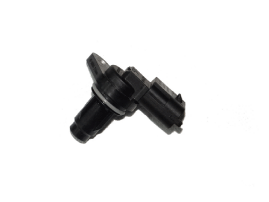
Troubleshooting
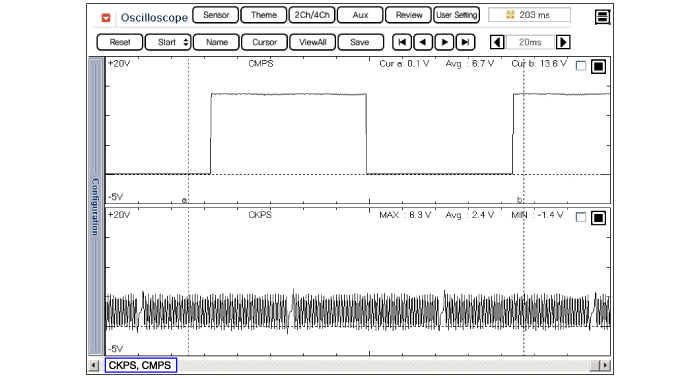
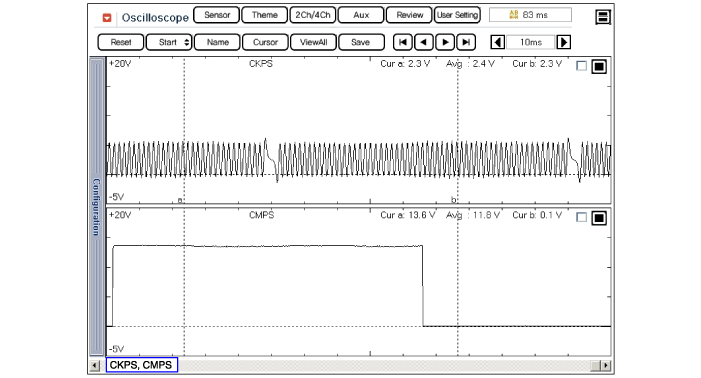
Schematic diagrams
(M/T)
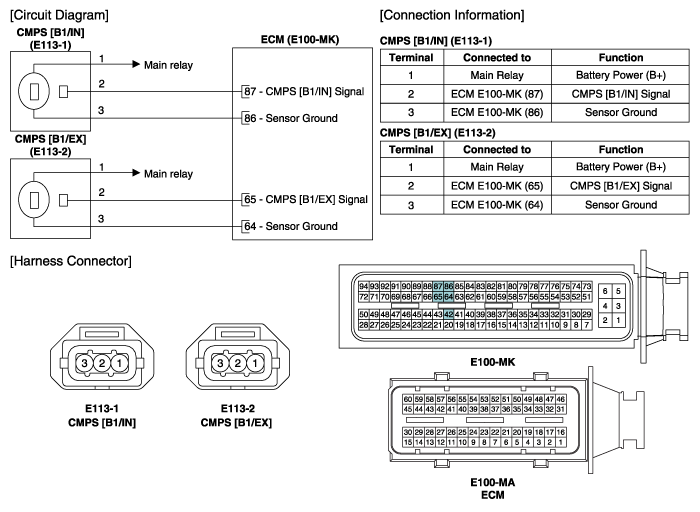
(A/T)
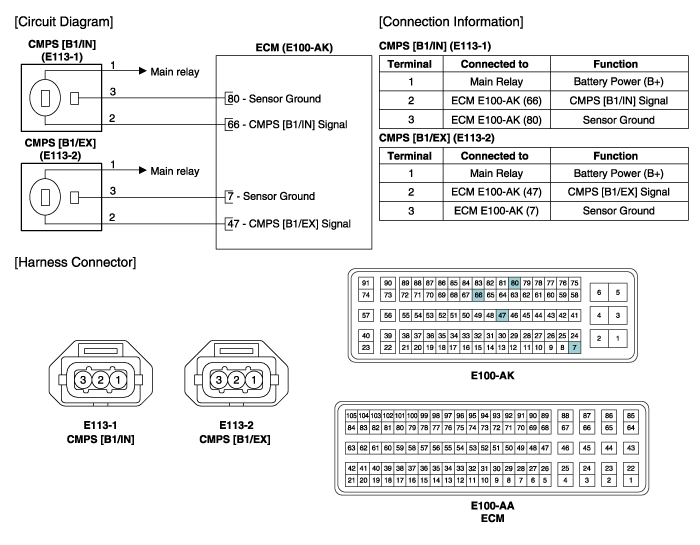
Repair procedures
| 1. |
Check signal waveform of CKPS and CMPS using a GDS.
|
Specification : Refer to "Waveform"
|
|
| • |
DON’T remove the camshaft position sensor during engine running
or right after engine stops, or a scald by the flowed out engine
oil may occur.
|
|
| 1. |
Turn the ignition switch OFF and disconnect the battery negative (-)
terminal.
|
| 2. |
Disconnect the camshaft position sensor connector (A).
|
| 3. |
Remove the mounting bolt (B), and then remove the sensor.
[Bank 1/Intake]
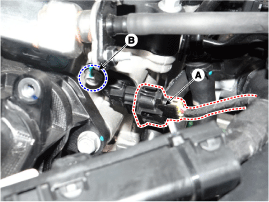
[Bank 1/Exhaust]
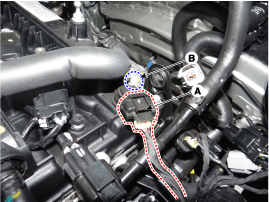
|
| • |
Install the component with the specified torques.
|
| • |
Note that internal damage may occur when the component is dropped.
In this case, use it after inspecting.
|
|
| • |
Apply the engine oil to the O-ring.
|
|
| • |
Insert the sensor in the installation hole and be careful not
to damage when installation.
|
|
| • |
Be careful not to damage the sensor housing and the connector.
|
| • |
Be careful not to damage the O-ring.
|
|
| 1. |
Install in the reverse order of removal.
|
Camshaft position sensor mounting bolt :
7.8 ~ 11.8 N.m (0.8 ~ 1.2 kgf.m, 5.8 ~ 8.7 lb-ft)
|
|
Description and operation
Description
Crankshaft Position Sensor (CKPS) detects the crankshaft position and is one
of the most important sensors of the engine control system. If th ...
Description and operation
Description
Knocking is a phenomenon characterized by undesirable vibration and noise and
can cause engine damage. Knock Sensor (KS) is installed on the c ...





 Crankshaft Position Sensor (CKPS)
Crankshaft Position Sensor (CKPS) Knock Sensor (KS)
Knock Sensor (KS)




